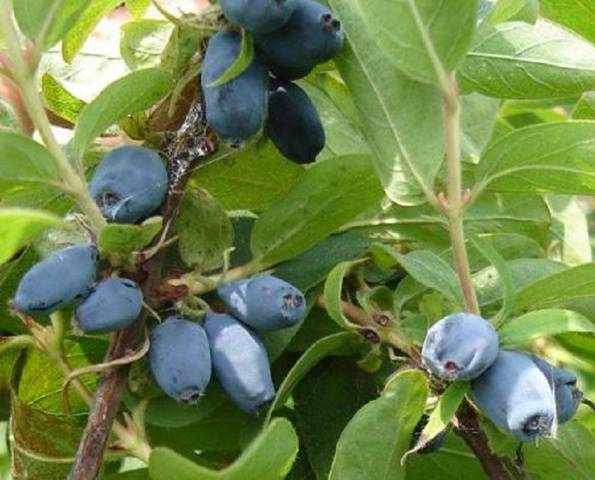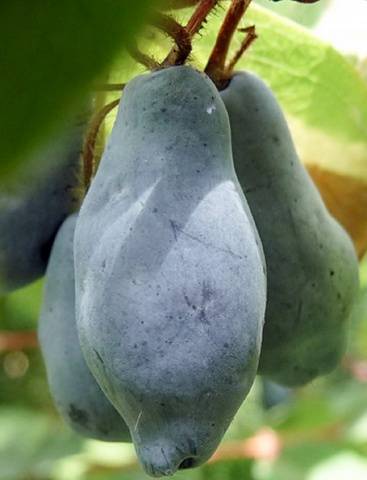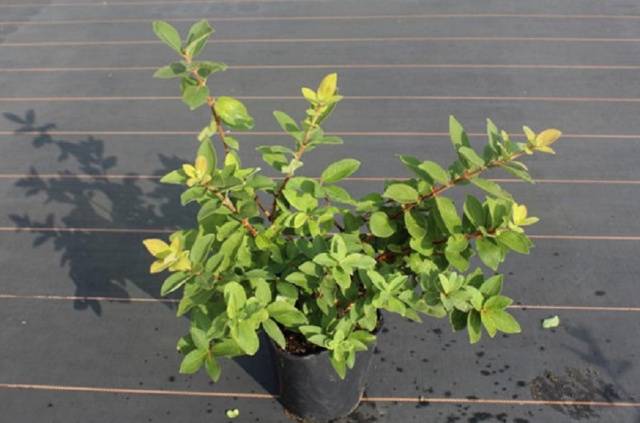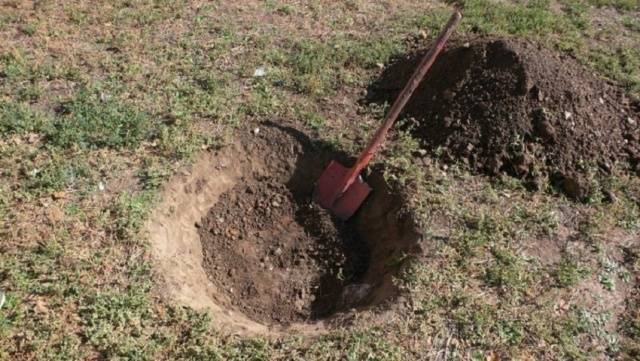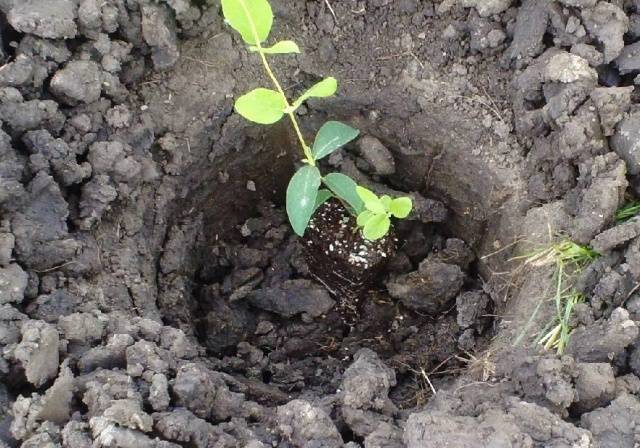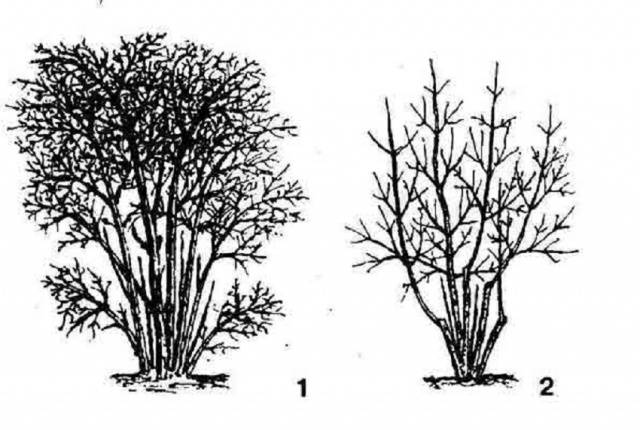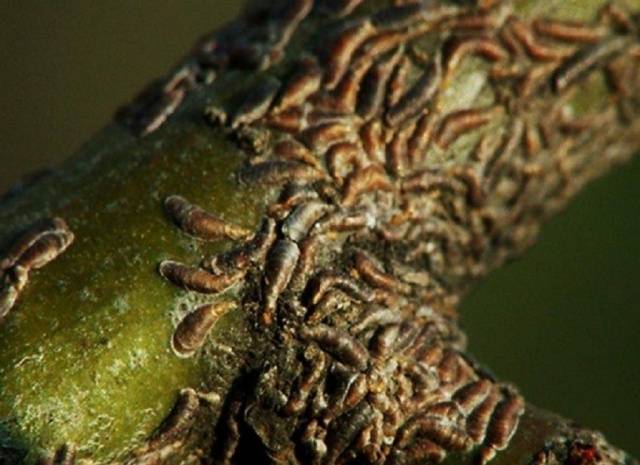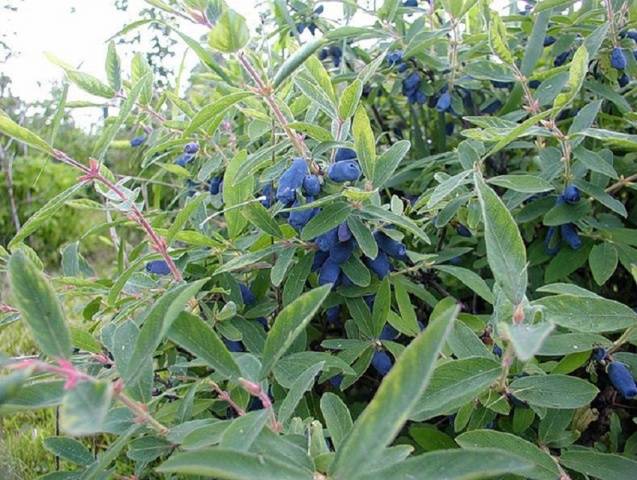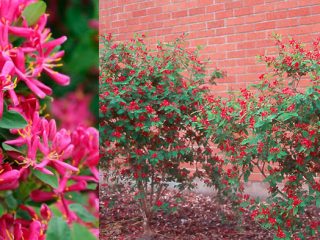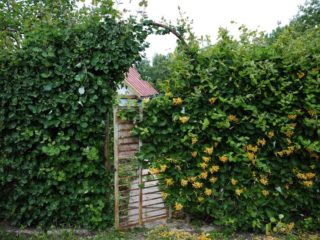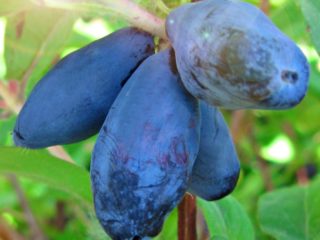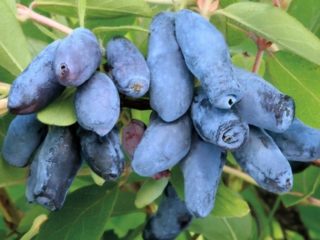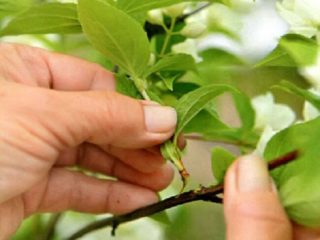Content
Honeysuckle is a crop with very worthy characteristics. It attracts the attention of gardeners with its unpretentiousness, decorativeness and original fruits.
Breeding history
Initially, the species and varieties of the crop originated from Kamchatka honeysuckle. As a result of a spontaneous mutation of this variety, the edible variety “Blue Bird” was obtained. The cause of the mutation was the work of the scientist-horticulturist M.A. Lisavenko. on pollination of Kamchatka honeysuckle at the Siberian Horticulture Research Institute. This happened during the existence of the USSR, and in 1989 the honeysuckle variety “Blue Bird” was already included in the State Register.
Scientists' recommendations for growing the species indicated the Northwestern region. But the early ripening period, the taste and nutritional qualities of the fruit, and good adaptive abilities allowed the “Blue Bird” to quickly spread throughout Russia. Although the natural distribution area is considered to be the Kuril Islands, Sakhalin, Kamchatka and Magadan, you can meet the “Blue Bird” in any region.
Description and characteristics of the variety
Honeysuckle "Blue Bird" ripens early and is a universal variety.The variety produces very tasty and healthy fruits, which are considered one of the main advantages of the crop. But it is important for gardeners to know the full description of the plant in order to navigate issues of agricultural technology.
The bush is deciduous, erect, vigorous and spreading. The height of an adult plant is 1.2 m–1.4 m. If the agrotechnical requirements of the variety are carefully observed, the parameter increases to 2 m. This must be taken into account when planting the plant in small areas. The branches are thin, young shoots have salad-colored pubescence, while last year's shoots are covered with bark and acquire a reddish-brick hue. The plant reacts negatively to heat and winter thaw, but frosts or cold snaps at the time of flowering do not cause a decrease in the vital activity of the Blue Bird bush.
The crown of the bush is spreading, thickened and dense, shaped like a ball or ellipse. The crown diameter of an adult honeysuckle is 1.7 m–1.8 m.
The leaves resemble an oblong ellipse in shape. The color of the plates is light green, the surface is smooth and shiny.
The variety blooms very early, flowers appear immediately after the end of frost. They resemble yellowish bells in shape and grow in small bunches.
The berries of the variety are sweet with a pleasant aroma. Contain a large amount of nutrients and vitamins. The honeysuckle variety has an oval-elongated fruit shape, a blue-black color, the length of the berries is about 2 cm, the average weight is 0.8 g. The berries are universally used. They are good fresh and as preparations.
The yield of this honeysuckle variety is 1.6-1.7 kg per bush, which is considered an average for the crop.
The Blue Bird variety has high winter hardiness. The bush without shelter can withstand frost down to -30°C.
The plant is distinguished by its increased adaptive abilities to changes in growing conditions, good resistance to diseases and pests.
Pollinators
The variety is classified as self-sterile. Therefore, when growing Blue Bird honeysuckle bushes, it is necessary to plant pollinating varieties. Without fulfilling this condition, it will not be possible to obtain a decent harvest. It is better to take neighboring varieties recommended for pollination from the line of Kamchatka selection. According to reviews from gardeners, the following types of honeysuckle are suitable:
- "Moraine";
- "Blue Spindle";
- "Titmouse";
- "Start";
- "Kamchadalka";
- "Malvina";
- “In memory of Kuminov”;
- "Cinderella".
It is necessary to place at least 3 different varieties of honeysuckle on the site, then the yield of the bush will correspond to the description, and the berries will grow sweeter.
To attract as many natural pollinators as possible to the plant, gardeners spray the buds with a sweet solution. It is prepared from 10 liters of water and 50 g of honey.
Features of fruiting
The Blue Bird variety ripens in late spring or early summer. Mid-June is the deadline. The plant begins to bear fruit 3-4 years after planting, and this period lasts up to 25 years. Honeysuckle variety "Blue Bird" is valued because it allows you to enjoy fresh berries when other crops are just getting ready to bear fruit. The harvest on the bush is ready for harvesting before the wild strawberries ripen. You should not wait until the berries are ripe. In this case, they will quickly fall off the bush, although, according to reviews, even fallen specimens are well preserved. In order not to lose part of the harvest, gardeners advise spreading a piece of cloth under the bush so that the fruits do not fall to the ground.
Advantages and disadvantages
You can read a lot about the advantages and disadvantages of the Blue Bird variety of honeysuckle in reviews from gardeners. The crop on the plots is not new, it has stood the test of time, many have been growing the variety for several years. Therefore, compiling a list of characteristics is not difficult.
Advantages | Flaws |
Frost resistance of the bush, allowing the variety to be grown in regions with cold climates | The taste of the fruit is a purely subjective opinion of the gardener. Some people don't like him |
Unpretentiousness in care makes it possible to plant the bush even in those regions that, according to conditions, are considered uncomfortable for honeysuckle | Yield indicator of the variety. Considered low for honeysuckle |
Early fruiting period. The saturation of vitamins and useful components makes honeysuckle indispensable during a shortage of fresh berries | Increased sensitivity of an adult plant to a sharp increase in temperature in summer (heat) and spring (thaw). |
Resistance to diseases and pests, if gross violations of agricultural practices are avoided. |
|
Versatility of use and fruit and taste. |
|
Secrets of growing
Honeysuckle variety "Blue Bird" is distinguished by persistent fruiting for a long time. Therefore, the plant should be planted in a good place, the bush should be planted correctly, and proper care should be provided. What is included in these concepts, we will consider below.
How to choose seedlings
To ensure good development and fruiting of the bush, it is best to plant two-year-old seedlings. They take root easily and quickly enter the fruiting phase. It is recommended to purchase seedlings from specialized nurseries or trusted suppliers.This is due to the risk of purchasing a completely different plant, instead of the desired Blue Bird variety. It is optimal to choose a nursery located in your region. The plants sold there are already adapted to the environmental conditions and soil characteristics.
When purchasing, pay attention to the parameters of the seedling:
- height – from 25 cm to 60 cm;
- age - no older than 3 years;
- closed root system (container);
- well developed numerous roots.
Spine may be viewed with seller's permission. If flaking bark has already formed on the seedling, this should not confuse the buyer. This will not affect the development of the honeysuckle bush.
Landing dates
The timing of planting the Blue Bird honeysuckle bush directly depends on the duration of the growing season, the beginning and end of which occurs very early. Therefore, gardeners try not to plant seedlings of the variety in the spring. This is due to the fact that in many regions the buds begin to wake up much earlier than the soil and air warm up. If such a need arises, then in the spring the seedlings are simply transferred to the planting hole along with a lump of earth. The less damage the lump receives, the better the honeysuckle will take root.
The optimal time for planting a bush is 1–1.5 months after the end of fruiting. Before the first frost, the bushes have time to take root and gain strength for wintering. Planting of bushes in the southern regions can be shifted to September (mid-late).
According to gardeners, the Blue Bird honeysuckle takes root well in late summer. About 80% of seedlings successfully adapt to a new location. But the spring procedure cannot give such high results.
Selection of location and soil
To plant honeysuckle, choose an area well lit by the sun. Lack of light negatively affects the development of the bush and the taste of the berries. They become smaller and become much more sour. In addition, the Blue Bird variety does not like strong winds and waterlogging. It is good to combine planting bushes with a natural barrier in the form of other plants. It is imperative to take into account the groundwater level (no closer than 1.5 m). If you do not allow stagnation of water, the plant does not get sick. Therefore, bushes are not planted in lowlands.
The culture does not make any special demands on the soil. However, on loose and nutritious loam or sandy loam the bush grows just fine. If the soil is in an area with a high acidity level, then liming must be done in advance.
Planting a bush
The height of an adult plant should be taken into account during planting. Therefore, at least 1.5 m is left between honeysuckle bushes. At the same time, the peculiarities of planting self-sterile crops are taken into account. Bluebird honeysuckle is placed in groups around pollinating varieties. Planting in rows or in a checkerboard pattern will not give results. For 4-5 honeysuckle seedlings, one pollinator bush is planted.
The size of the planting hole for the bush is a cube with sides of 45 cm.
Prepare the hole 3 weeks before the scheduled planting date. The excavated soil is mixed with compost or humus (2 buckets), wood ash (1.5 l) and poured back into the hole. You can replace the components with any complex fertilizer in an amount of 300 g. Depending on the composition of the soil, it is recommended to add sand or clay. A drainage layer is placed on the bottom, then the prepared mixture is laid, and the hole is covered with film until the day of planting.
Soak the roots of the seedlings in a solution of any growth stimulant and leave for 20 hours.
Then the roots are shortened, all damaged parts of the stems are cut off.
The soil in the hole is watered.
Place the seedling on a mound of earth and straighten the roots.
Fill the hole in small portions, gradually compacting the soil.
The root collar is raised above ground level by 4-5 cm.
Water the plant and mulch the circle around the trunk.
The shoots on the bush are not pruned.
Care
When growing bushes of the Blue Bird variety, you do not need to spend a lot of time caring for the plants. Important points are watering and fertilizing. But regular loosening and weeding of the bush’s surrounding circles will also be required. The depth of loosening should not be more than 4 cm.
Watering
If adult honeysuckle plants were planted, then post-planting watering should be plentiful. One bush will need 10 liters of water. During the growing season, Blue Bird honeysuckle is watered 4-5 times. Watering requirements are standard - evening or morning, sufficient volume (2-3 buckets). Take settled water and water the bushes once every 4 days. In autumn, moisture-recharging watering is necessary, and 3-4 buckets are used per plant.
Top dressing
The first feeding is applied 3 years after planting the Blue Bird honeysuckle seedling. As soon as warm weather sets in in the spring, it is necessary to apply nitrogen fertilizers at the time of loosening the soil. Organic matter is added when digging the soil once every three years. Honeysuckle responds well to the addition of humus. 14 days after flowering, you need to feed the bushes with complex mineral fertilizer (according to the instructions). One more feeding is needed before preparing for winter.At this point, phosphorus-potassium compounds are used. Feeding time is 14 days after harvest.
Trimming
Due to its high growth vigor, Bluebird honeysuckle requires pruning, which is done regularly. The plant is formed for the first time 4 years after planting the seedling. Basic principles of honeysuckle pruning:
- leave at least 18 branches to form the frame;
- regularly thin out the bush to prevent shading;
- observe the pruning time - early spring at a temperature of 0°C;
- leave the shoot length at least 30-35 cm, not reaching the growth point.
When the age of the honeysuckle bush reaches 15 years, anti-aging pruning is carried out. At this time, it is important to delete all old branches.
Protection from diseases and pests
Bluebird honeysuckle is not susceptible to a wide range of diseases. However, it is necessary to take measures against the spread of fungal infections. The plant may suffer from these diseases due to its proximity to other crops. Gardeners prefer to treat honeysuckle bushes with Bordeaux mixture immediately after picking berries to prevent problems.
Among the pests you should be wary of are the apple scale insect or the acacia false scale insect and various types of aphids. Treatments with “Aktara”, “Aktellik”, “Bankol” will help.
Wintering
No special structures are required to shelter honeysuckle bushes. But in years with harsh and snowless winters, the roots are protected from frost by a layer of peat or humus 20 cm thick. You can add cover with spruce branches.
Reproduction methods
To preserve varietal characteristics, Blue Bird honeysuckle is propagated vegetatively. The most common:
- Cuttings. Gardeners use green, woody and combined cuttings.Each type has its own nuances of performing the procedure. They do not differ from the classic version of propagation by cuttings.
- By layering. This option is used in June, when layering dug into the ground takes root best.
- Seeds. Suitable for breeders only. For summer residents, this method is very labor-intensive.
Some gardeners like the option of dividing a honeysuckle bush. It can be used for plants no younger than 6 years old and no older than 15 years old.
Conclusion
By planting a “Blue Bird” honeysuckle bush on your site, you can solve several issues at once - decorate the site with an ornamental plant and get an early source of vitamins and nutrients.
Undemanding care puts honeysuckle in one of the first places when choosing a crop for planting.
